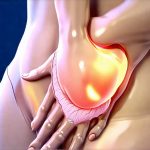Bladder pain is often described as debilitating, impacting quality of life far beyond just physical discomfort. What many people don’t realize is the seemingly inexplicable way environmental factors – particularly cold or damp conditions – can dramatically increase that pain. It’s not simply a matter of feeling colder; it’s a genuine intensification of the bladder sensation itself. This phenomenon isn’t well understood, leading to frustration for those who experience it and skepticism from others who haven’t. Understanding the potential reasons behind this connection is crucial for managing symptoms and finding relief, even if definitive answers remain elusive.
The link between weather and chronic pain, including bladder pain, has been recognized anecdotally for centuries. However, recent research is beginning to shed light on possible physiological mechanisms at play. While not everyone experiences the same sensitivity, a significant number of individuals with conditions like interstitial cystitis/bladder pain syndrome (IC/BPS) report a clear correlation between colder or wetter weather and increased symptom severity. This isn’t about psychological factors alone; it points towards complex interactions between the nervous system, inflammatory responses, and possibly even changes in pelvic floor muscle function triggered by environmental stimuli.
The Neurological Connection: How Cold Impacts Pain Perception
The human nervous system is incredibly sensitive to temperature changes, and this sensitivity can be significantly altered in individuals experiencing chronic pain conditions. – One key element is nociception, the process of detecting potentially harmful stimuli. Cold temperatures can directly stimulate nociceptors (pain receptors) in the bladder and surrounding tissues. – More importantly, cold exposure can lead to increased nerve sensitivity – a phenomenon known as peripheral sensitization. This means that even mild stimuli are perceived as more intense and painful. Imagine a volume knob being turned up on your pain signals! – Furthermore, chronic pain conditions often involve central sensitization, where the central nervous system (brain and spinal cord) becomes hypersensitive to pain signals over time. Cold weather can exacerbate this central sensitization, making it harder for the brain to regulate pain effectively.
Cold temperatures also trigger a physiological response aimed at conserving heat. This involves constriction of blood vessels, which reduces blood flow to extremities – and potentially, to the pelvic region. Reduced blood flow can lead to muscle tension and stiffness in the pelvic floor, further contributing to bladder discomfort. It’s a vicious cycle: cold -> vasoconstriction -> muscle tension -> increased pain -> heightened nerve sensitivity. Damp environments amplify this effect because moisture conducts heat away from the body more efficiently than dry air, making you feel colder faster and intensifying these processes. If you find that UTI pain seems to worsen with temperature changes, it’s important to understand this connection.
Inflammatory Responses & Muscle Tension Amplification
Chronic bladder pain is frequently associated with low-grade inflammation in the bladder wall. While the exact cause of this inflammation varies between individuals (and may not always be identifiable), it’s a central feature of many conditions, including IC/BPS. – Cold temperatures can exacerbate inflammatory processes by triggering the release of inflammatory mediators. This essentially means that cold weather “turns up” the existing inflammation in the bladder. – Dampness further compounds this issue because moisture can contribute to muscle stiffness and decreased movement. When muscles are stiff, they’re less efficient at removing metabolic waste products and delivering oxygen, potentially intensifying inflammation.
Pelvic floor dysfunction is common among individuals with chronic bladder pain. The pelvic floor muscles play a crucial role in supporting the bladder and other pelvic organs. – When these muscles become tense or spasming (due to cold weather, stress, or other factors), it can compress the bladder and urethra, leading to increased frequency, urgency, and pain. – Cold temperatures often cause reflexive tightening of muscles as a protective mechanism against the cold. This can easily exacerbate existing pelvic floor tension and contribute to bladder symptoms. The combination of inflammation and muscle tension creates a perfect storm for heightened bladder pain in colder, damp environments. It’s also possible that colds can trigger these responses as well.
Understanding Visceral Pain & Referred Pain
Visceral pain – pain originating from internal organs like the bladder – is notoriously difficult to pinpoint. Unlike somatic pain (from skin or muscles), it’s often described as deep, aching, and poorly localized. – This is because visceral organs have fewer nerve endings capable of detecting pain compared to skin, and their nerves are intertwined with each other. As a result, pain from the bladder can sometimes be referred to other areas of the body, such as the lower back, abdomen, or even the thighs. – Cold weather’s impact on nerve sensitivity and inflammation can make visceral pain even more diffuse and harder to manage.
The brain interprets visceral pain signals differently than somatic pain signals. Visceral pain tends to be more emotionally charged, leading to feelings of anxiety and distress. – This emotional component can amplify the perception of pain and contribute to a cycle of chronic suffering. – Environmental factors like cold or dampness might not directly cause the initial bladder pain but they can significantly worsen it by exacerbating both the physical and emotional aspects of visceral discomfort. Understanding why urinary pain can change throughout the day is also helpful.
The Role of the Pelvic Floor Muscles
As previously mentioned, pelvic floor dysfunction is often a significant contributor to chronic bladder pain. – These muscles are responsible for supporting the bladder, bowel, and uterus (in women), as well as controlling urination and defecation. When these muscles are weak, tight, or uncoordinated, it can lead to various symptoms, including bladder urgency, frequency, and pain. – Cold temperatures often cause reflexive tightening of pelvic floor muscles as a protective mechanism against the cold. This can exacerbate existing pelvic floor tension and contribute to bladder discomfort.
Specific exercises designed to release tension in the pelvic floor—such as gentle stretching or mindful relaxation techniques—can be beneficial for managing symptoms. – However, it’s crucial to work with a qualified healthcare professional (physiotherapist specializing in pelvic health) to ensure you’re doing the right exercises and avoiding movements that could worsen your pain. – Dampness can also contribute to muscle stiffness making movement more difficult and exacerbating tension. Staying warm and dry is essential for minimizing this effect.
Managing Symptoms: Practical Strategies
While there’s no magic bullet for preventing weather-related bladder pain, several strategies can help minimize its impact: – Stay Warm & Dry: This seems obvious, but it’s critical. Layer clothing, use waterproof outerwear in damp conditions, and consider using heated pads or blankets to warm up the pelvic region. – Pelvic Floor Exercises: Regularly practicing pelvic floor exercises (under the guidance of a healthcare professional) can help strengthen and relax these muscles. – Stress Management: Chronic pain often leads to stress, which further exacerbates symptoms. Incorporate stress-reducing techniques like yoga, meditation, or deep breathing exercises into your routine. – Hydration & Diet: Staying well-hydrated is important for bladder health, but avoid excessive caffeine and alcohol consumption, as these can irritate the bladder. Some individuals find that certain foods trigger their symptoms; keeping a food diary may help identify potential culprits. – Consider Gentle Movement: Light exercise (walking, swimming) can help improve blood flow and reduce muscle tension. However, avoid strenuous activity that could worsen your pain. – Talk to Your Doctor: Discuss your symptoms with your healthcare provider to rule out other possible causes and develop a comprehensive management plan tailored to your needs.
It’s vital to remember that everyone experiences bladder pain differently, and what works for one person may not work for another. This article provides general information only and shouldn’t be considered medical advice. If you are struggling with chronic bladder pain, please consult with a healthcare professional for personalized guidance and support.





















